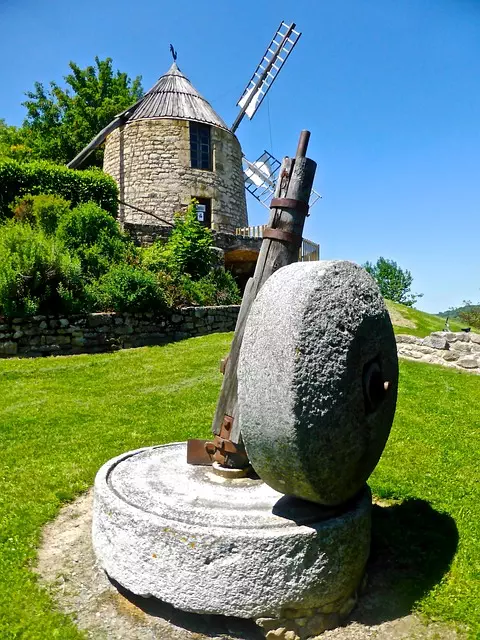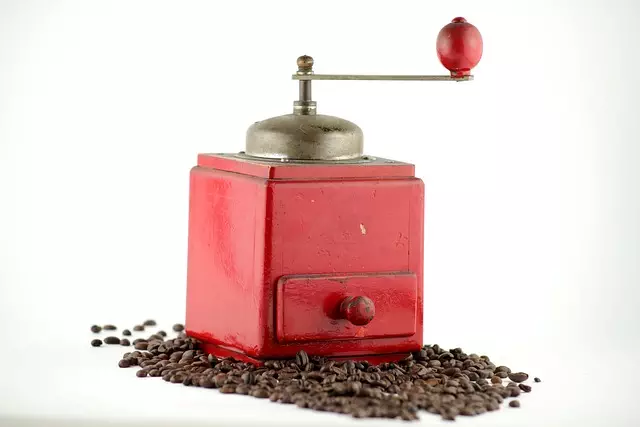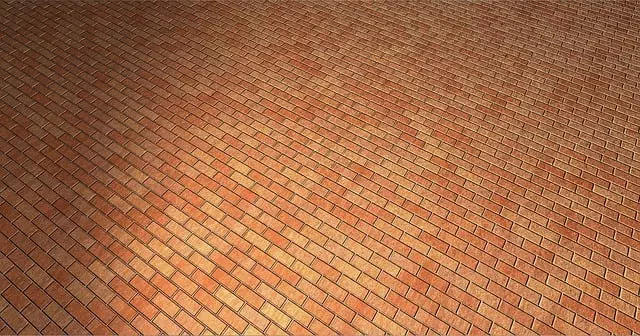In Toledo, Ohio, pavement milling and grinding plays a crucial role in maintaining the city's road infrastructure by addressing deficiencies, enhancing safety, and extending the lifespan of roadways. The process involves using sophisticated machinery to precisely remove surface layers for repair or resurfacing, with a strong emphasis on resource efficiency and environmental protection through recycling. Toledo's advancements in this field are exemplary, with the integration of laser guidance systems significantly increasing precision and efficiency. The city's commitment to innovation is evident in its use of high-performance engines and durable cutting teeth capable of handling different asphalt thicknesses, ensuring accurate positioning and consistent thickness. Toledo's approach not only streamlines operations but also improves safety and environmental compliance by minimizing dust and debris. The economic benefits are substantial, with the recycled material, known as reclaimed asphalt pavement (RAP), being repurposed in new construction projects, cutting costs associated with virgin materials. Safety protocols and comprehensive training for workers are stringently enforced to ensure operations adhere to OSHA regulations and minimize risks to personnel and traffic disruptions. Toledo's strategic management of pavement milling and grinding projects showcases the city's ability to overcome complex infrastructure challenges through interdepartmental collaboration, advanced technologies, and high-performance equipment. This model offers valuable insights for municipalities nationwide, highlighting the effectiveness of a comprehensive approach to large-scale urban infrastructure projects.
Pavement milling and grinding are integral processes in road maintenance and infrastructure development, yet they present unique challenges that require advanced equipment, meticulous safety measures, and innovative solutions to ensure successful project outcomes. This article delves into the intricacies of pavement milling and grinding, highlighting the evolution of techniques in Toledo, Ohio as a case study. From the technological advancements driving efficiency to the environmental impact and economic benefits of this approach to infrastructure maintenance, readers will gain a comprehensive understanding of the industry’s current landscape. Key sections explore the state-of-the-art equipment essential for these operations, the measures taken to safeguard workers, and the lessons learned from Toledo’s pavement milling endeavors. Join us as we navigate the complexities and innovations shaping the future of road maintenance.
- Understanding Pavement Milling and Grinding: An Overview
- The Evolution of Pavement Milling Techniques in Toledo, Ohio
- Equipment and Technology: The Backbone of Efficient Pavement Milling Operations
- Environmental Considerations in Pavement Milling and Grinding
- Economic Implications for Infrastructure Maintenance through Pavement Milling
- Safety Protocols and Training for Pavement Milling Workers
- Case Study: Challenges and Solutions Encountered in Toledo, Ohio's Pavement Milling Projects
Understanding Pavement Milling and Grinding: An Overview

Pavement milling and grinding are integral processes in road maintenance and construction, which involve the removal of the surface course or layers of an existing paved area to prepare for repairs, resurfacing, or reconstruction. This technique is employed to correct deficiencies in the pavement, improve safety, and extend the service life of the roadway. The equipment used for pavement milling includes milling machines that can saw, crush, and remove both asphalt and concrete to specified depths. In Toledo, Ohio, as in many other locales, this procedure is a critical component of infrastructure upkeep, ensuring that roads remain safe and navigable for residents and commuters alike. The process begins with the precise planning and marking of areas slated for milling, followed by the actual milling operation, which involves cutting and grinding the pavement into specified sizes and transporting the removed material for recycling or disposal. This not only facilitates efficient use of resources but also minimizes environmental impact. Understanding the nuances of pavement milling and grinding is essential for planners, engineers, and contractors to effectively manage road maintenance projects and mitigate any potential challenges that may arise during the process. The skillful application of this technique requires a combination of expertise, precision machinery, and adherence to environmental and safety regulations. As such, pavement milling and grinding in Toledo, Ohio, is a testament to the ongoing commitment to maintaining high-quality infrastructure within the city’s road network.
The Evolution of Pavement Milling Techniques in Toledo, Ohio

The practice of pavement milling and grinding in Toledo, Ohio, has undergone significant advancements over the years, reflecting a broader evolution within the industry nationwide. Initially, the process involved basic milling operations to remove damaged asphalt surfaces from roadways, with a focus on safety and immediate patchwork. However, as technology progressed, so did the sophistication of pavement milling techniques in Toledo. The introduction of advanced machinery equipped with laser guidance systems has greatly enhanced precision and efficiency, allowing for more intricate milling patterns and minimal disruption to traffic flow. These advancements have been instrumental in extending the lifespan of roadways and improving the quality of the milled materials, which are then recycled into new pavement layers.
Today, Toledo’s approach to pavement milling and grinding stands as a testament to the region’s commitment to infrastructure maintenance and sustainability. The city has integrated environmental considerations by incorporating eco-friendly practices that recycle milled material back into the roadways, reducing landfill use and emissions from new asphalt production. Furthermore, the use of high-tech sensors and monitoring equipment during the milling process ensures that only the necessary amount of material is removed, optimizing resource usage and cost savings. This evolution in pavement milling and grinding techniques not only upholds Toledo’s road infrastructure but also showcases the city’s dedication to staying at the forefront of advancements in this critical aspect of urban infrastructure maintenance.
Equipment and Technology: The Backbone of Efficient Pavement Milling Operations

Pavement milling and grinding play a pivotal role in infrastructure maintenance and development, serving as a critical process for road rehabilitation. The efficiency of pavement milling and grinding operations hinges significantly on the caliber of equipment and the sophistication of technology employed. In Toledo, Ohio, as in many other regions, the success of pavement milling projects is largely dependent on the machinery’s ability to adapt to various job requirements, ensuring precise cuts and minimal disruption to traffic flow. Advanced milling machines, equipped with high-performance engines and sharp, durable cutting teeth, are designed to handle asphalt of varying depths. These machines often feature GPS technology for accurate positioning and laser guidance systems to maintain consistent thickness across the entire milled area. The integration of these technologies not only streamlines the milling process but also enhances safety and environmental compliance by reducing dust and debris. Moreover, the use of innovative grinding equipment with adjustable heads allows for customization of the milling pattern and depth, catering to the diverse needs of different projects. The commitment to employing state-of-the-art technology in pavement milling and grinding operations in Toledo, Ohio, underscores the importance of staying at the forefront of industry advancements to meet the demands of modern infrastructure upkeep.
Environmental Considerations in Pavement Milling and Grinding

Economic Implications for Infrastructure Maintenance through Pavement Milling

Pavement milling and grinding are integral processes in the maintenance and rehabilitation of road infrastructure, offering economic benefits that extend beyond immediate construction costs. These techniques involve removing the top layer or specific sections of pavement to repair underlying issues or repurpose the material for other projects. In Toledo, Ohio, where transportation networks support both local traffic and commerce, the implementation of pavement milling and grinding has proven to be a cost-effective solution for infrastructure upkeep. By precisely targeting defective asphalt, these methods minimize waste and reduce the need for extensive excavation, thus lowering project costs. Moreover, the reclaimed asphalt pavement (RAP) generated from these operations can be utilized in new construction, further cutting expenses associated with sourcing virgin materials. The economic implications of employing pavement milling and grinding are significant: it not only provides a sustainable approach to infrastructure maintenance but also supports local economies by creating jobs and stimulating related industries.
The long-term economic advantages of pavement milling and grinding are evident in Toledo, Ohio, where the strategy has been adopted. This method ensures that roads are maintained at a fraction of the cost of complete road replacements. The durability and performance of repaired surfaces are comparable to those constructed from new materials. Additionally, the use of RAP contributes to reducing the carbon footprint associated with road maintenance, as it lessens the environmental impact by recycling existing materials. From an economic standpoint, pavement milling and grinding offer a sustainable and cost-effective approach to maintaining Toledo’s infrastructure, ensuring that the city can manage its transportation networks efficiently while keeping fiscal responsibilities in check.
Safety Protocols and Training for Pavement Milling Workers

When it comes to pavement milling and grinding operations, safety protocols and comprehensive training are paramount to ensure the well-being of workers and the quality of the project outcomes. These workers operate heavy machinery designed to grind down asphalt or concrete surfaces to a specified depth. The precision and control required in this process necessitate rigorous training programs that certify operators can safely maneuver milling machines, which are essential for maintenance work on highways, airport runways, and other infrastructure projects. In Toledo, Ohio, as with many regions, the environmental conditions such as varying weather patterns must be factored into safety measures, making adaptability a key component of the training. Employers in the region ensure that their pavement milling and grinding crews adhere to Occupational Safety and Health Administration (OSHA) regulations, which dictate the use of personal protective equipment (PPE), including hard hats, safety glasses, earplugs, and high-visibility clothing. Additionally, these workers undergo specialized training to handle the machinery’s vibration and noise, as well as to recognize and mitigate potential risks like working in proximity to live traffic or around underground utilities. The training also encompasses emergency response procedures, which are crucial for immediate action should an accident occur. By investing in the education and safety of pavement milling and grinding workers, Toledo, Ohio operations can run smoothly and effectively, with a reduced risk of incidents that could harm personnel or disrupt traffic flow.
Case Study: Challenges and Solutions Encountered in Toledo, Ohio's Pavement Milling Projects

In Toledo, Ohio, the implementation of pavement milling and grinding projects has presented a series of challenges that are indicative of broader issues faced in similar urban infrastructure initiatives nationwide. The city’s complex network of streets, some dating back several decades, necessitates careful planning and execution during the milling process. Challenges such as maintaining traffic flow, navigating tight spaces, and managing the variable conditions of road surfaces are common. For instance, the presence of older infrastructure like water mains and sewer lines can complicate the milling operation, requiring precise coordination with other utility services to avoid disruptions or damage.
To address these challenges, Toledo has implemented a range of solutions that have proven effective. Adopting advanced pavement milling and grinding technologies has allowed for more efficient and precise operations, which in turn reduce the time required to complete projects. The use of high-performance equipment with enhanced maneuverability has been crucial in areas with limited space or complex geometries. Additionally, Toledo has prioritized collaboration with other city departments to ensure that all utility work is coordinated and that any potential conflicts are mitigated before they impact the project timeline. This proactive approach not only streamlines operations but also minimizes inconvenience to residents and commuters. The lessons learned from Toledo’s pavement milling and grinding projects serve as a valuable case study for other municipalities looking to undertake similar initiatives, demonstrating the importance of strategic planning, technological innovation, and interdepartmental coordination in overcoming the inherent challenges of such infrastructure projects.


